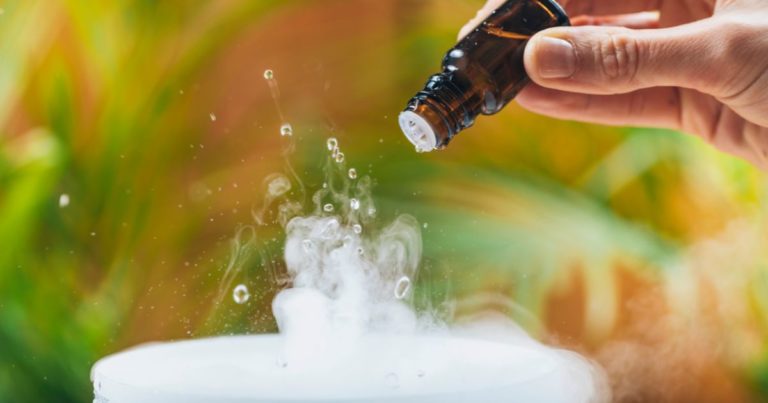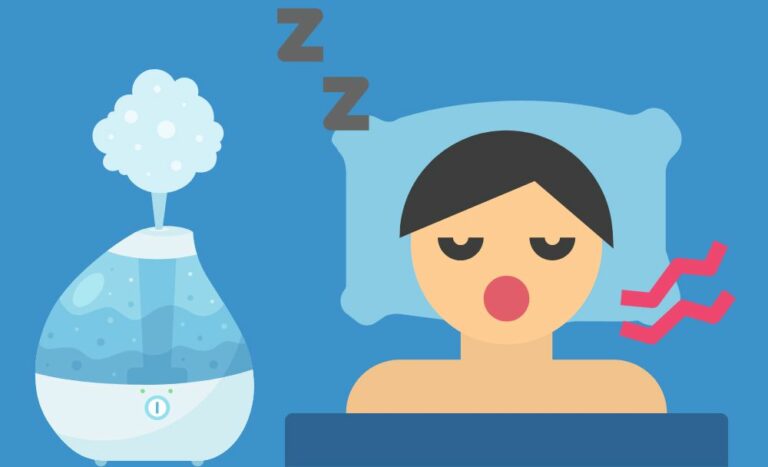Do Humidifiers Help With Dust?

Humidifiers can be beneficial in trapping and diminishing airborne particles, such as dust mites and other allergens, by raising the moisture content of the air. But do humidifiers help with dust removal? How do they help with dust?
In this article I’ll explore how humidity affects our environment, discuss how you can use a humidifier to improve indoor air quality, and look at some alternatives for keeping your home free from dust and allergens that can trigger allergy symtoms.
What is Dust?
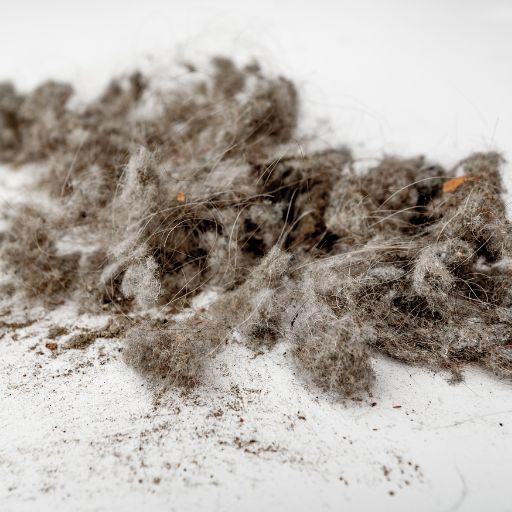
Dust is an accumulation of tiny particles that settle on surfaces or float in the air. A mixture of substances, such as dirt, pollen, skin cells and fabric fibers, can form dust particles. Dust can cause allergy symptoms, and affect your overall health if it’s not kept under control.
What are the Different Types of Dust?
Dust is often composed primarily of microscopic particles from soil, sand, dead skin cells, clothing fibers and pet dander. Other common sources in dust include:
- Dust mite populations (tiny bugs and their fecal matter) who feed on dust
- Mold spores
- Pollen grains from plants.
The most common type of dust found indoors is called house dust which contains all sorts of debris such as:
- Hair strands
- Food crumbs
- Insect parts
- Small pieces from furniture and carpets.
What Causes Dust?
The main source for indoor dust comes from outside through open windows or doors when wind blows in particles like soil or pollen grains. These then settle onto surfaces inside your home where they become part of the house dust mixture.
In addition to this outdoor source there are also many activities within our homes that contribute to the dust levels such as vacuuming carpeted floors or stirring up old insulation during renovations; even just walking around will stir up the number of dust particles into the air we breathe.
How Does Dust Affect Our Health?

Dust can have a negative impact on our health, causing allergies, respiratory issues, and aggravating existing conditions like asthma. Dust can irritate your nose and throat, cause you to sneeze, increase congestion, and trigger indoor allergies such as watery eyes, coughing and breathing problems.
Do Humidifiers Help with Dust Allergies?
A humidifier can help with dust by increasing moisture in the air, which can cause airborne dust to become heavier and settle on surfaces rather than staying in the air. This can help improve your air quality and help reduce airborne dust particles that can trigger allergies and respiratory issues.
Does a Humidifier Clean the Air?
A humidifier doesn’t actually “clean” the air (you need an air purifier for that), but it can help keep particles from spreading around your home. Humidifiers add moisture to the air, thus increasing humidity levels, causing these particles become heavier and fall out of suspension before they have time to spread throughout your house.
Does Low Humidity Cause More Dust?
Yes. Low humidity is one of the main causes of increased dust buildup in homes. As mentioned above, when there isn’t enough moisture in the air, tiny particles of dust become lighter and stay suspended longer than usual—making them more likely to spread around your house via airflow or people walking through rooms.
Maintaining relative humidity in the recommended humidity range can prevent this from happening. It is important however, not to increase the moisture in your home too much. Dust mites thrive in humid conditions. The waste from dust mites are one of the most common causes of allergy symptoms.
How to Use a Humidifier to Reduce Dust in Your Home
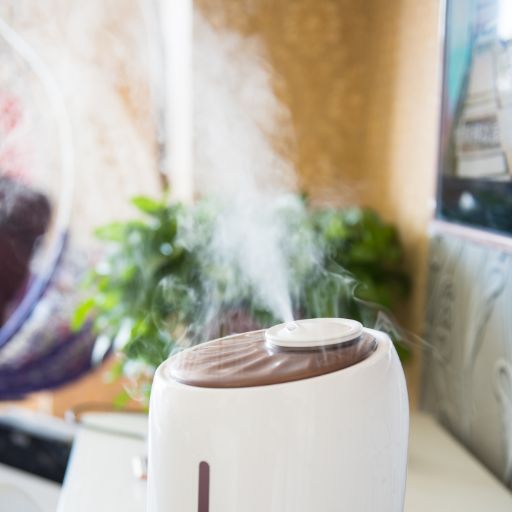
A humidifier may be a helpful tool for decreasing the amount of dust in your home, and it is essential to pick the correct one for your requirements as well as keeping up appropriate levels of humidity. For optimal performance, selecting the correct humidifier for your needs and maintaining appropriate humidity levels is essential. Additionally, cleaning and changing filters regularly will help keep your device running efficiently.
Deciding on the best humidifier for your home requires careful consideration of various types, such as warm mist, cool mist, ultrasonic and evaporative models. Each one has its own advantages and disadvantages so it’s best to research each option before making a purchase decision.
Once you have chosen a suitable humidifier for your needs, maintaining proper levels of humidity in your home is key when trying to reduce dust particles in the air. Generally, 40-50% relative humidity is optimal; however, this could be different based on your location and other elements such as external temperatures.
You can buy hygrometers online (here’s one on Amazon for around $10) which measure relative humidity levels inside buildings. They are inexpensive and allow you to see how much humidity is in the air and keep the humidity level within the desired range.
Maintaining and regularly cleaning a humidifier is essential to make it an effective tool in removing dust in the home. Remember to change filters and water regularly, and ideally use distilled or demineralized water in your humidifier. Other options to help decrease the amount of dust in the home include air purifiers, vacuuming with HEPA filters, and regular washing of bed linen.
Alternatives to Using a Humidifier for Dust Control
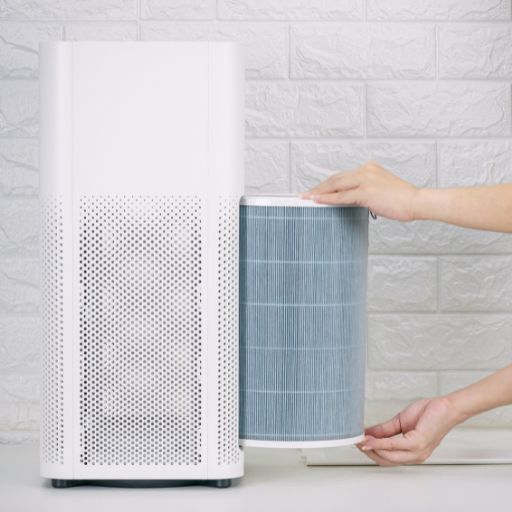
An air purifier is an excellent way to reduce dust levels within the home. Air purifiers contain filters that act as a barrier, catching dust, pollen and other allergens to keep them out of the air you breathe.
HEPA (High Efficiency Particulate Air) filters are especially effective at removing these pollutants from the air. When shopping for an air purifier, make sure it has a HEPA filter as this will provide the best results for clean air and reducing the amount of airborne dust.
Vacuuming regularly with a vacuum cleaner equipped with HEPA filtration can also help keep dust levels down in your home. The strong suction of modern vacuums can pull up dirt and debris that have settled on carpets, rugs, furniture and other surfaces around your house. Make sure to empty the vacuum bag or container after each use so that all collected dirt doesn’t just get re-circulated back into the room again.
Dusting furniture and surfaces regularly is another way of keeping down indoor dust levels. Dust settles quickly on flat surfaces such as tables, chairs, shelves etc., but regular cleaning can help prevent build-up over time. A microfiber cloth dampened with water works well for wiping away surface grime and collecting dust without spreading more around.
Washing bedding, curtains and upholstery frequently is key when trying to reduce indoor dust levels too. These items tend to attract lots of tiny particles due to their porous nature.
Remember, a steam cleaner effectively kills dust mites and mold, so use your steamer on upholstery, padded headboards, duvets, curtains and other soft furnishings around your home.
Frequently Asked Questions About Humidifiers for Dust

I’ll answer the most common questions relating to how humidity control can help with dust in the air.
Should I use a Humidifier or Dehumidifier for Dust?
If you are in a humid climate, a dehumidifier can help control dust mites and dust allergies by reducing humidity in the air. If you are in a low humidity area, a humidifier can help reduce airborne dust by weighing down particles. Both can help with dust during different seasons.
Does Humidity Get Rid of Dust?
Humidity causes dust particles to stick together, weighing them down on surfaces rather than circulating in your home’s air. Humidifiers don’t get rid of dust all together.
Which is Better Humidifier or Air Purifier?
An air purifier is generally a better choice than a humidifier for dust control. An air purifier is designed to remove particles from the air, including dust, pet dander, and other allergens. It works by pulling air through a filter, which traps the particles and prevents them from circulating throughout your home. A humidifier can help to alleviate dry air and make it easier to breathe, it does not purify the air.
What helps with Dust in the Air?
There are several things you can do to help decrease the amount of dust in the air:
1. Use an air purifier: An air purifier can help remove dust particles from the air, creating a cleaner and healthier indoor environment.
2. Regularly clean your home: Dust can accumulate on surfaces and in carpets, so it’s important to regularly clean your home to keep dust levels low. Vacuum carpets and rugs, dust surfaces with a damp cloth, and mop hard floors.
3. Keep humidity levels in check: Adding humidity to the air can help weigh down dust with the water vapor.
4. Change air filters regularly: Make sure to change the air filters in your HVAC system regularly to prevent dust from circulating throughout your home.
5. Keep windows closed: Keeping windows closed can help prevent outdoor dust from entering your home.
By following these steps, you can help to reduce the amount of dust in the air and create a cleaner and healthier indoor environment.
Conclusion
A humidifier can be beneficial in decreasing the dust concentration inside your home. It helps by increasing the humidity level which reduces the amount of dust particles in the air and also prevents new ones from forming. Regular cleaning and vacuuming using your steam cleaner and a vacuum with a HEPA filter will also help eliminate dust and improve the overall air quality in your home.
- Can You Use a Steam Mop On Karndean Flooring? - June 19, 2024
- How To Clean Unsealed Concrete Floors - June 7, 2024
- How to Clean Stamped Concrete - June 7, 2024

